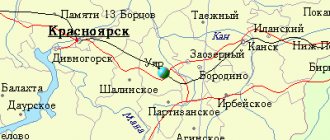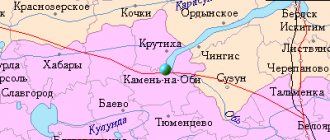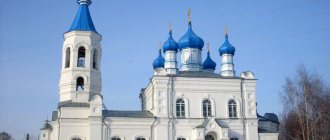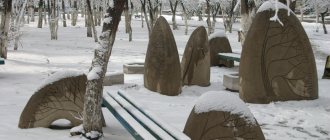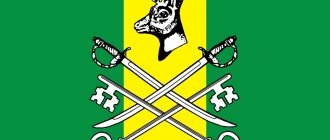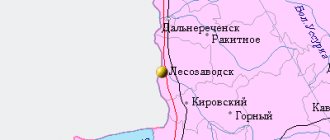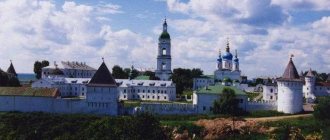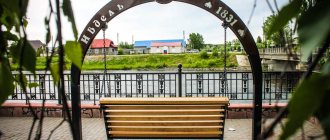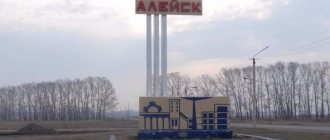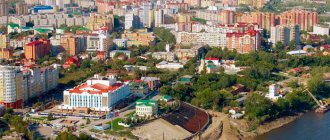For the river in Russia, see Borzya (river).
City in Zabaykalsky Krai, Russia
| Borzya Borzya | |
| City [1] | |
| Borzya station | |
| Flag Coat of arms | |
| Location of Borzya | |
| Borzya Location of Borzya Show map of Russia Borzya Borzya (Trans-Baikal Territory) Show map of Zabaykalsky Krai | |
| Coordinates: 50°23'N 116°31'E / 50.383°N Latitude 116.517°E / 50.383; 116.517 Coordinates: 50°23'N 116°31'E. / 50.383°N Latitude 116.517°E / 50.383; 116,517 | |
| A country | Russia |
| Federal subject | Transbaikal region [1] |
| Administrative region | Borzinsky district [1] |
| Based | 18th century |
| City status from | 1950 |
| Height | 690 m (2260 ft) |
| population size (2010 Census) [2] | |
| • General | 31 379 |
| • Evaluate (2018) [3] | 28 888 ( -7,9% ) |
| Administrative status | |
| • Capital from | Borzinsky district [1] |
| Municipal status | |
| • Municipal district | Borzinsky municipal district [4] |
| • Urban village | Borzinskoye urban settlement [4] |
| • Capital from | Borzinsky municipal district [5], urban-type settlement Borzinskoye [6] |
| Timezone | UTC+9 (MSK+6[7]) |
| Postal code [8] | 674600–674603, 674609 |
| Dial code(s) | +7 30233 |
| OKTMO ID | 76609101001 |
Borzya
(Russian: Borzya, IPA: [borzʲə]; Buryat: Boorzho,
Boorjo
; Mongolian: Boorzh,
Boorj
) is a city and the administrative center of Borzinsky Okrug in Zabaykalsky Krai, Russia, located 349 km (217 mi) southeast of Chita , administrative center of the region. Population: 31,379 (2010 census); [2] 31,460 (2002 census); [9] 36,373 (1989 census). [10]
Geography[edit]
The city is located on the Borzya River—a right tributary of the Onon—O 40 kilometers (25 mi) from the border with Mongolia in the south and 70 kilometers (43 mi) from the border with China in the southeast.
Climate[edit]
Borzya has a humid continental climate (Köppen climate classification DWB
listen)) bordering on subarctic climates (Köppen climate classification
DWC
) and semi-arid climates (Köppen climate classification
BSk
), with severely cold winters and warm summers. Precipitation is quite low, but from June to September there is slightly more precipitation than at other times of the year.
| Climate data for Borzya | |||||||||||||
| Month | Jan | Feb | Mar | Apr | May | Jun | Jul | Aug | Sep | October | But I | December | Year |
| Record high °C (°F) | 0 (32) | 7,1 (44,8) | 18,1 (64,6) | 30,1 (86,2) | 37,2 (99,0) | 41,4 (106,5) | 40,3 (104,5) | 37,6 (99,7) | 34,4 (93,9) | 25,8 (78,4) | 12,4 (54,3) | 4,4 (39,9) | 41,4 (106,5) |
| Average high °C (°F) | -18,3 (-0,9) | -12,1 (10,2) | -2,3 (27,9) | 9,2 (48,6) | 18,0 (64,4) | 24,1 (75,4) | 25,7 (78,3) | 23,6 (74,5) | 16,8 (62,2) | 7,2 (45,0) | -6,1 (21,0) | -15,7 (3,7) | 5,8 (42,5) |
| Daily average °C (°F) | -26,3 ( -15,3 ) | -21,3 (-6,3) | -10,4 (13,3) | 1,7 (35,1) | 10,1 (50,2) | 16,9 (62,4) | 19,2 (66,6) | 16,9 (62,4) | 9,4 (48,9) | −2 (31,6) | -13,4 (7,9) | -23,1 (-9,6) | -1,7 (28,9) |
| Average low °C (°F) | -32,8 (-27,0) | -29,3 (-20,7) | -18,6 (-1,5) | -5,7 (21,7) | 1,7 (35,1) | 9,2 (48,6) | 12,8 (55,0) | 10,4 (50,7) | 2,5 (36,5) | -6,7 (19,9) | -19,7 (-3,5) | -29,4 (-20,9) | -8,8 (16,2) |
| Record low °C (°F) | -50 (-58) | -49,0 (-56,2) | -43,6 (-46,5) | -30,8 (-23,4) | -12,3 (9,9) | -4,5 (23,9) | 1,2 (34,2) | -2,8 (27,0) | -13,8 (7,2) | -29,1 (-20,4) | -43,1 (-45,6) | -51,7 (-61,1) | -51,7 (-61,1) |
| Average precipitation, mm (inches) | 3 (0,1) | 2 (0,1) | 4 (0,2) | 12 (0,5) | 17 (0,7) | 52 (2,0) | 84 (3,3) | 67 (2,6) | 33 (1,3) | 10 (0,4) | 5 (0,2) | 5 (0,2) | 294 (11,6) |
| Average relative humidity (%) | 79,3 | 77,5 | 69,4 | 52,5 | 47,6 | 54,3 | 63,7 | 63,4 | 60,7 | 61,0 | 75,4 | 80,3 | 65,4 |
| Average sunshine hours per month | 169,0 | 204,4 | 266,6 | 265,5 | 294,5 | 309,0 | 293,0 | 286,8 | 241,5 | 224,8 | 168,0 | 148,8 | 2 871,9 |
| Source 1: Temps & Precip: pogodaiklimat.ru [11] | |||||||||||||
| Source 2: Other data: climbase.ru (1948-2011) [12] | |||||||||||||
History[edit]
Although there has been human settlement on the site of the current city since the 18th century, the modern city began with the construction of the Trans-Siberian Railway in 1899. The settlement around the Borzya railway station was officially opened in 1900 under the name Suvorovsky
in honor of Alexander Suvorov. [13] This name, however, was not widely used by local residents, who continued to use the same name as the railway station and river. Eventually, the name Borzya became official when the village received city status in 1950.[13]
Borzya
Borzya is a city (since 1950) in the Trans-Baikal Territory. Population - 29,225 people. (2020).
Geography
Located on the left bank of the Borzi River (right tributary of the Onon, Amur basin), 372 km (by road) southeast of the regional center - the city of Chita. The federal highway A350 Chita - Zabaikalsk - the border with the People's Republic of China and the southern branch of the Transbaikal Railway (ZabZhD) Tarskaya - Zabaikalsk pass through Borzya. The Borzya junction station is located in the city. The distance by rail to Chita is 344 km.
Natural attractions
24 km southwest of the city, in a closed basin, there is a natural monument - the Borzinskoe salt lake. In its vicinity grow multi-rooted onion, listed in the Red Book of the Trans-Baikal Territory, Latke iris, sedge, etc. The lake is interesting because during dry periods it half dries out and a mirabilite crust, called a skull, forms at the bottom. Table salt is deposited on top of it. It was here, in the 18th-19th centuries, that salt production existed and the production volume was more than 100,000 pounds.
Further to the southwest, 50 km from the city beyond Lake Borzinsky, the Daursky Nature Reserve is located.
Story
The settlement arose in the 18th century almost immediately after the signing of the Burin Treaty on August 20, 1727, not far from the nomadic settlements of the Agin Buryats on the Borzya River (Bur. Boorzho) near the salt lakes. Since 1756, industrial production of table salt began on the Borzin lakes, which lasted for 180 years. In the speech of Russian settlers, the name of the village changed somewhat; it began to be pronounced Borzya. In 1828 and 1834, Borzya was visited by the first poet of Transbaikalia, F.I. Baldauf. In 1891, 226 people lived in Borza, there were 4 houses, 46 yurts.
A new stage in the development of the village is associated with the start of construction in 1899 of the Trans-Baikal section of the Trans-Siberian Railway - the Kaidalovskaya branch. Cadre workers from large industrial cities came here from all over the country. A railway settlement was founded, the plan of which was drawn up by land surveyor Lavrentyev. The opening of the village took place on May 9, 1900, on the centenary of the death of Generalissimo A.V. Suvorov, so the village received the name “Suvorovsky”, but it did not take root, and the village retained the name Borzya station.
The village of Borzinsky belonged to the First Chindatskaya village of the Transbaikal Cossack Army, and the village of Suvorovsky belonged to the Second Chindatskaya village.
Four roads ran from the village. In the village itself there were several streets: Boulevard, 1st and 2nd Ononskaya, Onon - Borzinskaya, Pushkinskaya, Barabashevskaya and Korsakovskaya. There was no church; the population attended church at St. Borzya. There was no school either; the nearest school was in the village. Chindant, few children attended; children from Suvorovsky were not accepted into the railway school due to lack of places. There was no medical care; the nearest medical center was in Second Chindant, where the staff had two paramedics, but in 1906-1907. there was none. The population of the village at Borzya station was divided into two settlements: some settled in the village of Suvorovsky, others in dugouts on the opposite side behind the linear part. While the residents of the village were engaged in trade, cattle breeding, and worked on the railroad, the residents of the dugouts had no specific occupations.
Since 1911, fairs for the sale of leather, wool, and meat were held annually in Borza, attracting merchants from all over Transbaikalia and Mongolia. There was a postal and telegraph office, many shops and a market, and a slaughterhouse. Classes were conducted in two schools - private and railway, and there was a church.
During the Civil War, figures of the White movement Baron Ungern and Ataman Semyonov visited Borza. In May 1918, at Borzya station, Semyonov declared himself, the representative of the cadet party S.A. Taskin and General I.F. Shilnikov the “Provisional Transbaikal Government”, thereby establishing Transbaikalian statehood and independence from Russia, which lasted until the liquidation of the Far Eastern republics. Borzya is also associated with the name of the Soviet writer A. A. Fadeev, who participated in its liberation from the White Guards in November 1920. For two months in 1920, the “white” government of the Transbaikal region was headquartered in Borza.
In 1924, Borzya became a district center, and since 1928, a district center, to which the territories of the current Aleksandro-Zavodsky and Transbaikalsky districts, which later separated, were subordinate.
In 1950, the village of Borzya was transformed into a city.
In January 2015, the Military Glory memorial was desecrated by vandals. On the occasion of the 70th anniversary of the Great Victory, the memorial was completely restored and reconstructed; Bishop Dimitry (Eliseev) of Nerchinsk and Krasnokamensk consecrated it.
In 2015, the tank crew from Borzi became the world champion in tank biathlon.
Borzya during the Great Patriotic War
Over 10 thousand people were called up to the front from Borzi and the Borzinsky region.
Zhigmit Zhigdurov, a native of the Borzinsky district, at the cost of his life destroyed a group of German machine gunners who broke into the Soviet command post, and was presented with the Order of the Red Banner. Hundreds of names of Borzin residents were engraved on the granite slabs of the military glory memorial.
Local government and social security authorities showed concern for the families of fallen front-line soldiers, demobilized soldiers and disabled people.
During the war, military hospitals were located in Borzya:
- 111 Field mobile hospital, art. Borzya
- 326 Military hospital, Borzya and 79 crossing point (Sherlovaya Gora)
- 403 Military Hospital, Borzya
- 1840 Evacuation hospital, Borzya
- 1077 Hospital for the lightly wounded, Borzya
- 2632 Hospital for the lightly wounded, Borzya
- 3181 Hospital for the lightly wounded, Borzya
- 4923 Evacuation Hospital, Borzya
Borzya experienced enormous difficulties during the war years. Unlike many cities and regions, where the development of the national economy was compensated by evacuated enterprises and population from the European territory of the USSR, the Borzinsky district, which was basically agricultural, had to make do on its own. The exception was the railway, where evacuated specialists still worked
Since 1941, the 36th Army, which became part of the Trans-Baikal Front, was stationed in Borza.
Religion
In Borza there is a parish of the Church of St. Sergius of Radonezh of the Nerchinsk and Krasnokamensk Diocese of the Russian Orthodox Church, as well as a religious organization, the Church of Salvation of Christians of the Evangelical Faith.
Culture and education
Cultural institutions
In the center of the city there is the “Social and Cultural Center” and the Borzinsky Regional Museum of Local Lore, the Borzinsky Intersettlement Central Library, not far from the station square, next to the Church of St. Sergius of Radonezh, there is the Vostok cinema.
Memorable places
Mass grave of 44 soldiers who died from wounds in hospitals in 1941-1945; grave of D.I. Matafonov, commander of the partisan artillery division and member of the Altagachan commune; Memorial "Military Glory"; mass grave of the Red partisans who died in the battles for the liberation of the station from the troops of Ataman Semenov (Station Square). T-34 tank on a pedestal in honor of the 6th Guards Tank Army.
In the city park there is a memorial obelisk to victims of political repression, an old cemetery that was destroyed and turned into a landfill in the area of school No. 15, a cemetery chapel, and a temple in honor of St. Sergius of Radonezh.
In 2021 on the square named after. Lenin, near the building of the Zheleznodorozhnikov Palace of Culture, a rare steam locomotive manufactured in 1953, L-2084, was installed as a monument.
Economics [edit]
In addition to the railroad workshops, employers in the city include food manufacturing plants, particularly meat production from the livestock industry in the surrounding area.
The Kharanor open-pit brown coal mine is located in the northwest of the city, providing fuel for electricity generation.
Transport[edit]
The city is on the original section of the Trans-Siberian Railway, which crossed Manchuria on its way to Vladivostok and was known as the Chinese Eastern Railway. This route was later bypassed by the current Trans-Siberian Railway, which is entirely within Russian territory, but the original line passing through Borzya is still used for passenger and freight traffic to and from China.
Culture and education
Education
The city has secondary educational institutions, vocational schools, music and art schools.
Memorable places
In the city there is a mass grave of 44 soldiers who died from wounds in hospitals in 1941-1945, the grave of D.I. Matafonov, commander of the partisan artillery division and member of the Altagachan commune, and the “Military Glory” memorial. Also in the park there is a memorial obelisk to the victims of political repression, an old cemetery devastated by the communists in the area of school 15 turned into a landfill, a cemetery chapel that newlyweds love to visit, as well as to hold weddings. On the station square there is a mass grave of Red partisans who fell in the battles for the liberation of the station from the troops of Ataman Semenov.
Since March 1972, the 150th Motorized Rifle Division was stationed west of the city.
Links[edit]
Notes[edit]
- ^ abcde Register of administrative-territorial units and settlements of the Trans-Baikal Territory
- ^ a b Federal State Statistics Service (2011). “All-Russian Population Census 2010. Volume 1" [All-Russian Population Census 2010, vol. 1]. All-Russian Population Census 2010 [All-Russian Population Census 2010]
. Federal State Statistics Service. - "26. The size of the permanent population of the Russian Federation by municipalities as of January 1, 2021". Federal State Statistics Service. Retrieved January 23, 2021.
- ^ abc Law No. 317-ZZK
- Law No. 316-ZZK
- Federal State Statistics Service. Federal Agency for Technological Regulation and Metrology. No. OK 033-2013 January 1, 2014 “All-Russian classifier of municipal territories. Code 76 609 101.” (Federal State Statistics Service. Federal Agency for Technological Regulation and Metrology. No. OK 033-2013 dated January 1, 2014. Russian Classification of Municipal Territories. Code 76 609 101.
). - "On the Calculation of Time". Official Internet portal of legal information
. June 3, 2011. Retrieved January 19, 2021. - Post office. Information and computing center of OASU RPO. ( Post office
).
Search for postal service objects ( postal Search for objects
) (in Russian) - ↑
Federal State Statistics Service of Russia (May 21, 2004).
“The population of Russia, the constituent entities of the Russian Federation as part of federal districts, urban settlements, settlements, settlements is 3 thousand or more people” [Population of Russia, its federal districts, federal constituent entities, districts, urban settlements, rural settlements - administrative centers and rural settlements with a population of more than 3,000 people] (XLS). All-Russian Population Census of 2002 [All-Russian Population Census of 2002]
. - “All-Union Population Census of 1989. The actual population of the union and autonomous republics, autonomous regions and districts, territories, effects, urban settlements and villages of Borzya, Russia.” Climatebase.ru. Retrieved January 24, 2013.
- ^ ab People's Encyclopedia “My City”. Borzya (Trans-Baikal Territory)
- The headquarters of the 36th Army of the Siberian Military District was moved from Borzya to Ulan-Ude [The headquarters of the 36th Army of the Siberian Military District was transferred from Borzya to Ulan-Ude]. Sibinfo
. February 24, 2009. Retrieved October 13, 2021.
